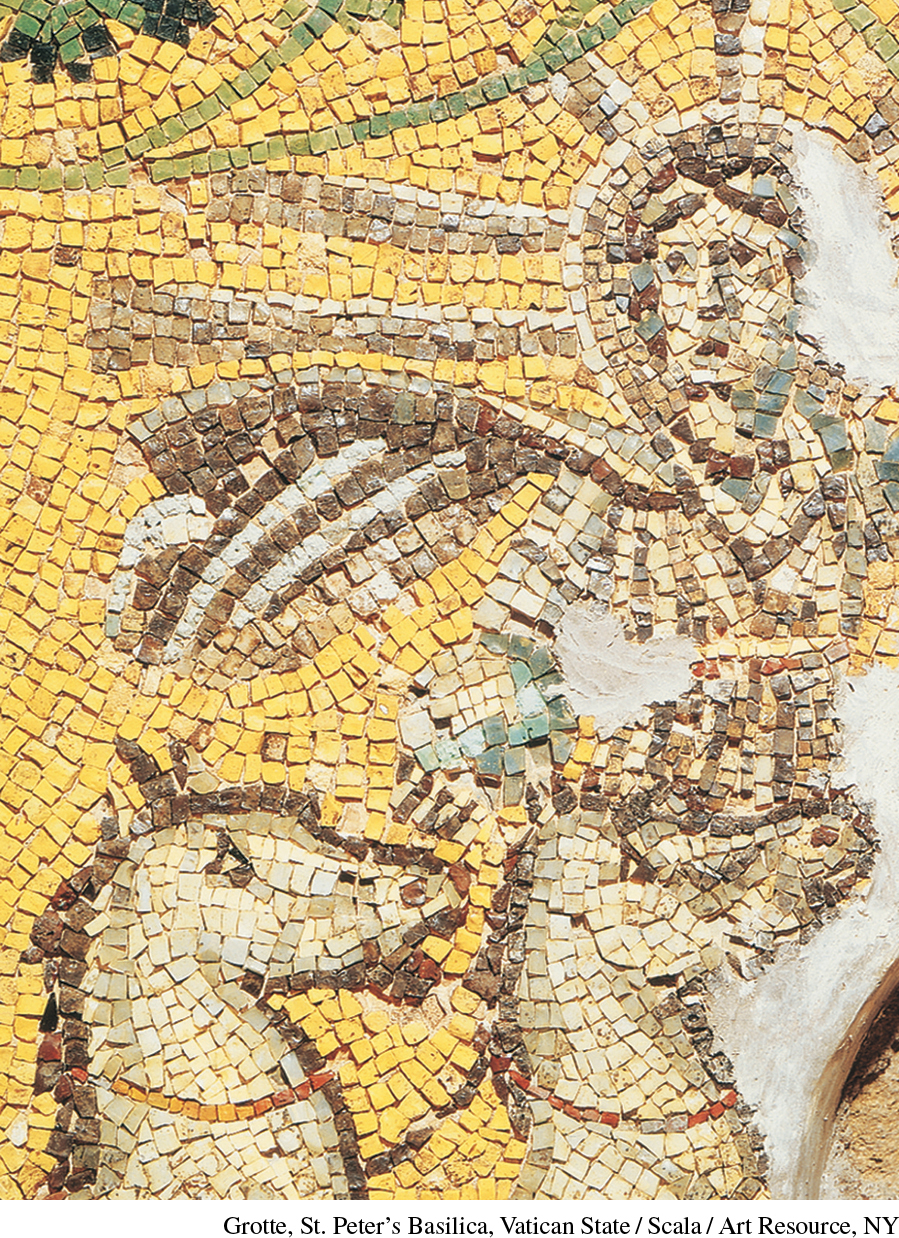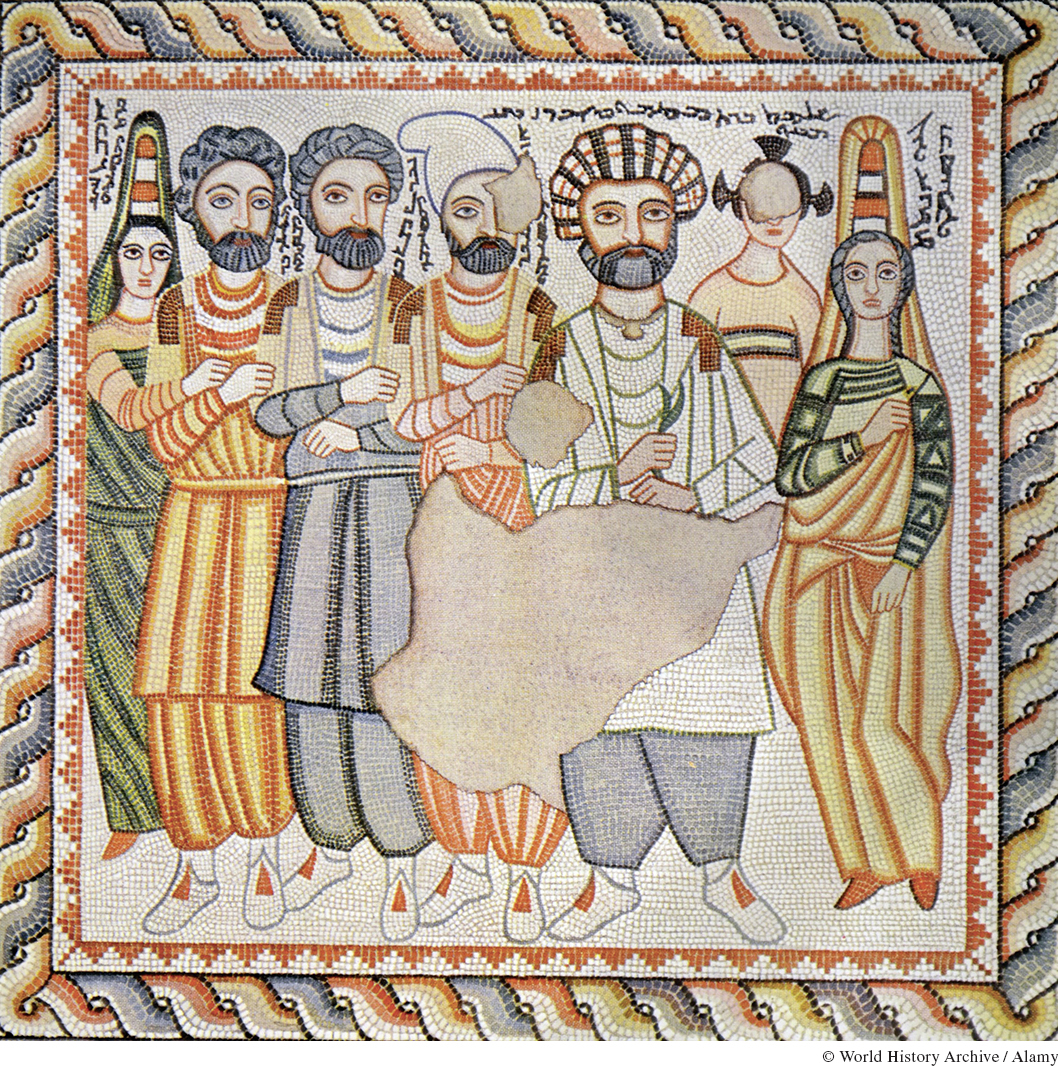The Struggle for Clarification in Christian Belief
Printed Page 221
Important EventsThe Struggle for Clarification in Christian Belief
The bishops struggled to establish clarity concerning what Christians should believe to ensure their spiritual purity. They often disagreed about theology, however, as did ordinary Christians, and doctrinal disputes repeatedly threatened the church’s unity.
Controversy centered on what was orthodoxy and what was heresy. (See “Growth of a New Religion” in Chapter 6.) The emperor became ultimately responsible for enforcing orthodox creed (a summary of correct beliefs) and could use force to compel agreement when disputes led to violence.
Theological questions about the nature of the Christian Trinity—Father, Son, and Holy Spirit, three seemingly separate deities nevertheless conceived by orthodox believers to be a unified, co-eternal, and identical divinity—proved the hardest to clarify. The doctrine called Arianism generated fierce controversy for centuries. Named after its founder, Arius (c. 260–336), a priest from Alexandria, it maintained that God the Father begot (created) his son Jesus from nothing and gave him his special status. Thus, Jesus was not identical with God the Father and was, in fact, dependent on him. Arianism found widespread support—the emperor Valens and his barbarian opponents were Arian Christians. Many people found Arianism appealing because it eliminated the difficulty of understanding how a son could be the equal of his father and because its subordination of son to father corresponded to the norms of family life. Arius used popular songs to make his views known, and people everywhere became engaged in the controversy. “When you ask for your change from a shopkeeper,” one observer remarked in describing Constantinople, “he harangues you about the Begotten and the Unbegotten. If you inquire how much bread costs, the reply is that ‘the Father is superior and the Son inferior.’”

Disputes such as this led Constantine to try to determine religious truth. In 325, he convened 220 bishops at the Council of Nicaea to discuss Arianism. The majority voted to banish Arius to the Balkans and declared in the Nicene Creed that the Father and the Son were homoousion (“of one substance”) and co-eternal. So difficult were the issues, however, that Constantine later changed his mind twice, first recalling Arius from exile and then reproaching him again not long after.
Numerous other disputes divided believers. Orthodoxy taught that Jesus’s divine and human natures commingled within his person but remained distinct. Monophysites (a Greek term for “single-nature believers”) argued that the divine took precedence over the human in Jesus and that he therefore had essentially only a single nature. They split from the orthodox hierarchy in the sixth century to found independent churches in Egypt (the Coptic church), Ethiopia, Syria, and Armenia.
Nestorius, made bishop of Constantinople in 428, argued that Mary, in giving birth to Jesus, had produced the human being who became the temple for God dwelling within him. Nestorianism therefore offended Christians who accepted the designation of theotokos (Greek for “bearer of God”) for Mary. The bishops of Alexandria and Rome had Nestorius deposed and his doctrines officially rejected at councils held in 430 and 431. Nestorian bishops then established a separate church centered in the Persian Empire, where for centuries Nestorian Christians flourished under the tolerance of non-Christian rulers. They later became important agents of cultural diffusion by establishing communities that still endure in Arabia, India, and China.
The heresy of Donatism best illustrates the ferocity that Christian disputes could generate. A conflict erupted in North Africa over whether to readmit to their old congregations Christians who had cooperated with imperial authorities during the Great Persecution. The Donatists (followers of the North African priest Donatus) insisted that the church should not be polluted with such “traitors.” So bitter was the clash that it even broke apart Christian families. One son threatened his mother, “I will join Donatus’s followers, and I will drink your blood.”
A council organized in Chalcedon (a suburb of Constantinople) in 451 to settle the still-raging disagreement over Nestorius’s views was the most important attempt to clarify orthodoxy. The conclusions of the Council of Chalcedon form the basis of the doctrine of most Christians in the West today. At the time, however, it failed to create unanimity, especially in the eastern empire, where Monophysites flourished.

By around 500, Augustine and other influential theologians such as Ambrose (c. 339–397) and Jerome (c. 345–420) earned the informal title church fathers because their views were cited as authoritative in disputes over orthodoxy. Augustine became the most famous of this group of patristic (from pater, Greek for “father”) authors, and for the next thousand years his many works would be the most influential texts in western Christianity aside from the Bible.
In The City of God, Augustine expressed his views on the need for order in human life and asserted that the basic human dilemma lay in the conflict between desiring earthly pleasures and desiring spiritual purity. Emotion, especially love, was natural and commendable, but only when directed toward God. Humans were misguided to look for any value in life on earth. Only life in God’s eternal city at the end of time had meaning.
Nevertheless, Augustine wrote, law and government are required on earth because humans are imperfect. God’s original creation was perfect, but after Adam and Eve disobeyed God, humans lost their initial perfection and inherited a permanently flawed nature. According to this doctrine of original sin—a subject of theological debate since at least the second century—Adam and Eve’s disobedience passed down to human beings a hereditary moral disease that made the human will a divisive force. This corruption necessitated governments that could suppress evil. The state therefore had a duty to compel people to remain loyal to the church, by force if necessary.
Christians, he argued, had a duty to obey the emperor and participate in political life. Soldiers, too, had to follow their orders. Order was so essential, Augustine argued, that it even justified what he admitted was the unjust institution of slavery. Although he detested slavery, he believed it was a lesser evil than the social disorder that he thought its abolition would create.
In The City of God, Augustine argued that history has a divine purpose, even if people could not see it. History progressed toward an ultimate goal, but only God knew the meaning of his creation:
To be truthful, I myself fail to understand why God created mice and frogs, flies and worms. Nevertheless, I recognize that each of these creatures is beautiful in its own way. For when I contemplate the body and limbs of any living creature, where do I not find proportion, number, and order exhibiting the unity of concord? Where one discovers proportion, number, and order, one should look for the craftsman.
The question of how to understand and regulate sexual desire perplexed Christians in the search for religious truth. Augustine wrote that sex trapped human beings in evil and that they should therefore strive for asceticism, the practice of self-denial and spiritual discipline. Augustine knew from personal experience how difficult it was to accept this doctrine. In his autobiographical work Confessions, written about 397, he described the deep conflict he felt between his sexual desires and his religious beliefs. Only after a long period of reflection and doubt, he wrote, did he find the inner strength to commit to chastity as part of his conversion to Christianity.
He advocated sexual abstinence as the highest course for Christians because he believed that Adam and Eve’s disobedience had forever ruined the perfect harmony God created between the human will and human passions. According to Augustine, God punished his disobedient children by making sexual desire a disruptive force that human will would always struggle to control. He reaffirmed the value of marriage in God’s plan, but he insisted that sexual intercourse even between loving spouses carried the unhappy reminder of humanity’s fall from grace. Reproduction, not pleasure, was the only acceptable reason for sex.
This doctrine ennobled virginity and sexual renunciation as the highest virtues. By the end of the fourth century, Christians valued virginity so highly that congregations began to request virgin ministers and bishops.